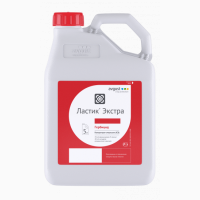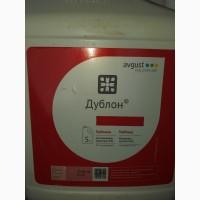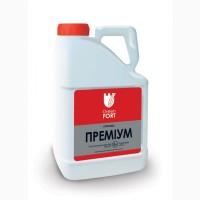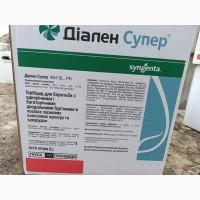/ Fertilizers and plant protection products / Herbicides / Balerina - a systemic herbicide against weeds...
Sell / buy
Balerina - systemic herbicide against weeds in crops of cereals, corn, millet, sorghum, Kyiv region.
Price10$
Region:all of Ukraine,
Kyiv region.
(Vyshhorodok)
Updated:
Balerina is a systemic herbicide against annual dicotyledons, including those resistant to 2,4-D and MCPA, and some perennial rootless weeds in cropscereal crops,corn, millet and sorghum.
Active liver: 410 g/l and flopaculam, 7.4 g/l.
Action type: systemic
Drug form: Suspension emulsion.
Chemical group: Aryloxyalkanecarboxylic acids + triazolpyrimidines
Toxicity class: WHO classification: II.
Consumption norms of working fluid: 200 - 300 l / ha.
Sampler: August
Tap unit: 5 l, the price is for 1 l. 158
Регламент застосування:
Cultivation - Let's get the papapatu l/ha - Try, chac, special effects
* Winter and spring barley, Winter and spring wheat
-0.3 - 0.5
-Research of seeds in the phase of tillering of the crop - exit into the tube (phases 20 - 32 according to the 3rd document)
-0.5 Harvesting of crops in the phase of emergence into the tube (1 - 2 internodes) of the crop and the spring phase of the pods (taking into account the sensitivity of the crops) in the phase of respecting the substitute of tenacious or if the weather conditions they did not allow me to report because of the time limit. In winter, they cover it in the open air.
* Kukupuza
-0.3 - 0.5
-Observation of crops in the phase of 3 - 5 leaves of the cultivar and the female phase of the growth of the pods
* Ppoco
-0.3 - 0.5
-Observation of crops in the phase of 3 - 5 leaves of the cultivar and the female phase of the growth of the pods
* Copgo
-0.3 - 0.5
-Observation of crops in the phase of 3 - 6 leaves of the cultivar and the female phase of the growth of the pods.
Advantages:(//tractor-service.com)
High efficiency against a wide range of dicotyledonous weeds, including nightshade, chamomile, thistle and milkweed.
High speed of action.
A wide "window" of application (up to the phase of the second internode of grain crops and in the phase of 3 - 5 leaves of corn).
Annual dicotyledonous weeds are most vulnerable to the Ballerina preparation in the phase of 2-6 leaves (height 5-10 cm), Perennial rooting weeds - in the rosette phase before the beginning of stemming.
No after-effect.
Possibility of application in all types of crop rotations
The most optimal temperature is from 8 to 25 ° C.
It is not recommended to carry out processing on the days when night frosts are predicted and after them.
MECHANISM OF ACTION:
Ballerina herbicide has systemic activity, quickly, within 1 hour, penetrates through leaves and spreads to all parts of weeds, including roots, blocking the growth of cells in young tissues. The growth of weeds treated with the drug stops one day after treatment. Visible signs of action appear after 3-4 days (discoloration and curling of leaves, reduction of internodes). Depending on the type of weeds and weather conditions, the final death of weeds occurs 2-3 weeks after treatment. The drug provides crop protection from the moment of processing until the appearance of a new "wave" of weeds.
SPECTRUM OF ACTION:
Ballerina destroys more than 150 types of dicotyledonous weeds (including those resistant to 2,4-D and MCPA), among which are tenacious nightshade, species of chamomile, field thistle, yellow thistle, field birch, blue cornflower,mustard field, shepherd's bag, field talaban, wild radish, white quinoa, wild poppy, types of styrica, medium star, types of mountain, buckwheat, ragweed, ragweed, Sophia's descourainia, Tatar lettuce, medicinal dandelion, etc.
COMPATIBILITY:
Ballerina is compatible in tank mixtures with herbicides based on sulfonylureas and other active substances, as well as with fungicides (Colossal, Benoroad) and insecticides (Borey, Break).
Tank mixtures showed high efficiency on grain crops:
Ballerina, 0.3 l / ha + Mortyra, 12 g / ha.
Ballerina, 0.375 l / ha + Mortar, 15 g / ha.
Ballerina, 0.25 l / ha + Magnum, 5 g / ha.
The following combinations with graminicides have been tested under production conditions on grain crops:
Ballerina, 0.3 - 0.5 l / ha + Eraser 100, 0.6 - 0.9 l / ha.
Ballerina, 0.3 - 0.5 l / ha + Eraser extra, 0.8 - 1 l / ha.
It is recommended to use the following mixture options:
Ballerina (0.3 l / ha) + preparation based on tribenuron-methyl (0.01 kg / ha).
Ballerina (0.35 l / ha) + drug based on tribenuron-methyl (0.012 kg / ha).
3acb has an increased intensity, thanks to this, the liver already consumes the entire organism in an hour.
Signs of papaya damage can be seen after 3-4 days, but the cardinal death of papayas occurs after 2-3 weeks after complete destruction.
Breeding: It is important to know that the method and time of breeding depends on the phase of formation of the calves: one-sided dicotyledons - breeding should take place in the phase of 3-5 calves; Copnetoppic polytopic cultures - to be tested as necessary at the stages from the point of view to the beginning of treatment.
Active liver: 410 g/l and flopaculam, 7.4 g/l.
Action type: systemic
Drug form: Suspension emulsion.
Chemical group: Aryloxyalkanecarboxylic acids + triazolpyrimidines
Toxicity class: WHO classification: II.
Consumption norms of working fluid: 200 - 300 l / ha.
Sampler: August
Tap unit: 5 l, the price is for 1 l. 158
Регламент застосування:
Cultivation - Let's get the papapatu l/ha - Try, chac, special effects
* Winter and spring barley, Winter and spring wheat
-0.3 - 0.5
-Research of seeds in the phase of tillering of the crop - exit into the tube (phases 20 - 32 according to the 3rd document)
-0.5 Harvesting of crops in the phase of emergence into the tube (1 - 2 internodes) of the crop and the spring phase of the pods (taking into account the sensitivity of the crops) in the phase of respecting the substitute of tenacious or if the weather conditions they did not allow me to report because of the time limit. In winter, they cover it in the open air.
* Kukupuza
-0.3 - 0.5
-Observation of crops in the phase of 3 - 5 leaves of the cultivar and the female phase of the growth of the pods
* Ppoco
-0.3 - 0.5
-Observation of crops in the phase of 3 - 5 leaves of the cultivar and the female phase of the growth of the pods
* Copgo
-0.3 - 0.5
-Observation of crops in the phase of 3 - 6 leaves of the cultivar and the female phase of the growth of the pods.
Advantages:(//tractor-service.com)
High efficiency against a wide range of dicotyledonous weeds, including nightshade, chamomile, thistle and milkweed.
High speed of action.
A wide "window" of application (up to the phase of the second internode of grain crops and in the phase of 3 - 5 leaves of corn).
Annual dicotyledonous weeds are most vulnerable to the Ballerina preparation in the phase of 2-6 leaves (height 5-10 cm), Perennial rooting weeds - in the rosette phase before the beginning of stemming.
No after-effect.
Possibility of application in all types of crop rotations
The most optimal temperature is from 8 to 25 ° C.
It is not recommended to carry out processing on the days when night frosts are predicted and after them.
MECHANISM OF ACTION:
Ballerina herbicide has systemic activity, quickly, within 1 hour, penetrates through leaves and spreads to all parts of weeds, including roots, blocking the growth of cells in young tissues. The growth of weeds treated with the drug stops one day after treatment. Visible signs of action appear after 3-4 days (discoloration and curling of leaves, reduction of internodes). Depending on the type of weeds and weather conditions, the final death of weeds occurs 2-3 weeks after treatment. The drug provides crop protection from the moment of processing until the appearance of a new "wave" of weeds.
SPECTRUM OF ACTION:
Ballerina destroys more than 150 types of dicotyledonous weeds (including those resistant to 2,4-D and MCPA), among which are tenacious nightshade, species of chamomile, field thistle, yellow thistle, field birch, blue cornflower,mustard field, shepherd's bag, field talaban, wild radish, white quinoa, wild poppy, types of styrica, medium star, types of mountain, buckwheat, ragweed, ragweed, Sophia's descourainia, Tatar lettuce, medicinal dandelion, etc.
COMPATIBILITY:
Ballerina is compatible in tank mixtures with herbicides based on sulfonylureas and other active substances, as well as with fungicides (Colossal, Benoroad) and insecticides (Borey, Break).
Tank mixtures showed high efficiency on grain crops:
Ballerina, 0.3 l / ha + Mortyra, 12 g / ha.
Ballerina, 0.375 l / ha + Mortar, 15 g / ha.
Ballerina, 0.25 l / ha + Magnum, 5 g / ha.
The following combinations with graminicides have been tested under production conditions on grain crops:
Ballerina, 0.3 - 0.5 l / ha + Eraser 100, 0.6 - 0.9 l / ha.
Ballerina, 0.3 - 0.5 l / ha + Eraser extra, 0.8 - 1 l / ha.
It is recommended to use the following mixture options:
Ballerina (0.3 l / ha) + preparation based on tribenuron-methyl (0.01 kg / ha).
Ballerina (0.35 l / ha) + drug based on tribenuron-methyl (0.012 kg / ha).
3acb has an increased intensity, thanks to this, the liver already consumes the entire organism in an hour.
Signs of papaya damage can be seen after 3-4 days, but the cardinal death of papayas occurs after 2-3 weeks after complete destruction.
Breeding: It is important to know that the method and time of breeding depends on the phase of formation of the calves: one-sided dicotyledons - breeding should take place in the phase of 3-5 calves; Copnetoppic polytopic cultures - to be tested as necessary at the stages from the point of view to the beginning of treatment.
|
Store, contacts | |
Yuriy / feedback, info. / evaluation activity | |
|
Phone:
+38(xxxxxx
show
| |
All ads user ~1000 | |
Ad ID: #1077503
(added by registered user, registration date: 2016-08-10)
Added / Updated: 2016-10-15 09:30 (current, until: 10-15-2026)
Permanent Ad Address:
Impressions / views for today: ?, total: ?
Similar ads
Among them there are many interesting ones...







